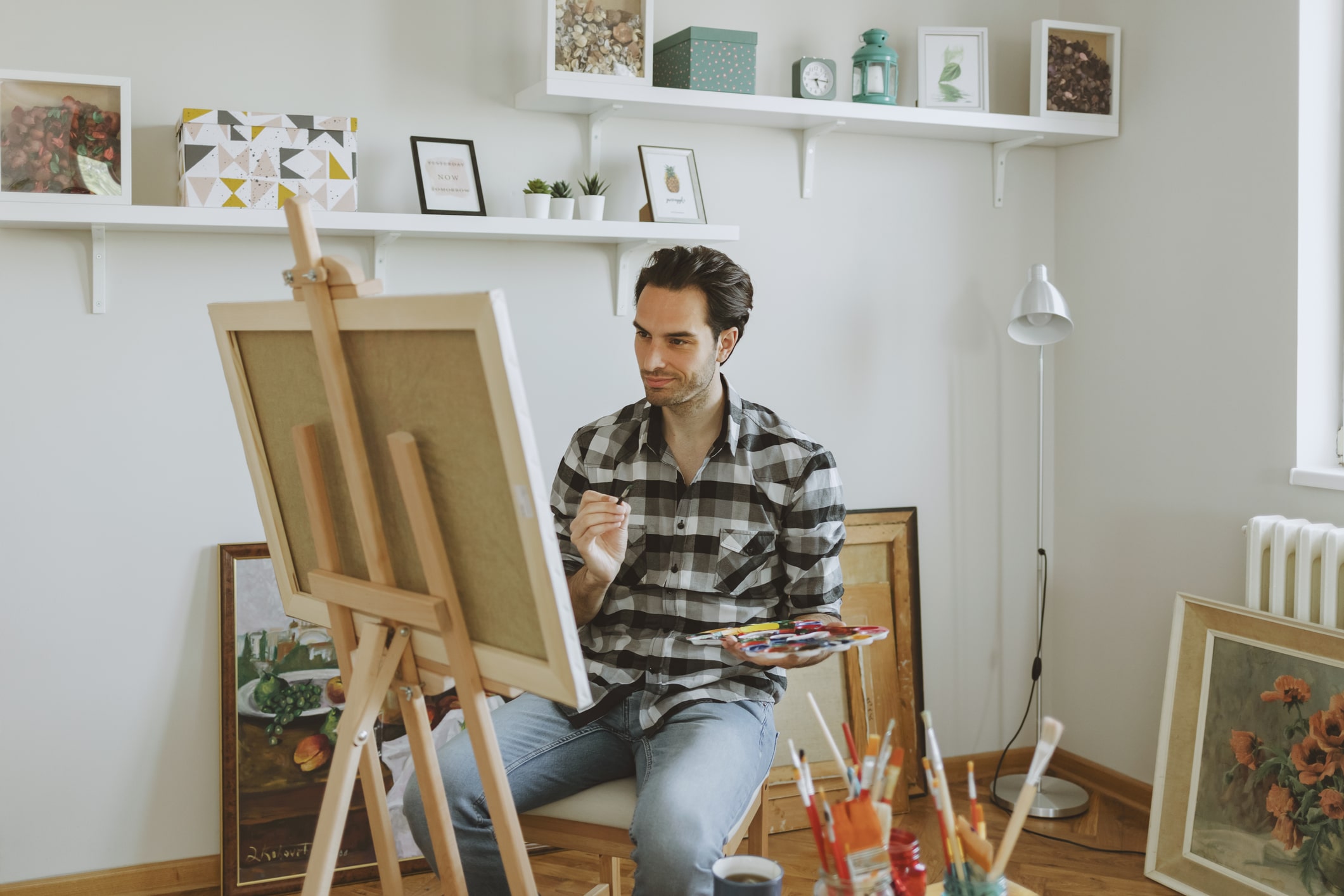“Focusing on beautiful art can be one answer to help reduce our anxiety over the immediate future as things continue to evolve with COVID-19. Exposure to art creates positive brain changes.”
Jill Casty, Glass Artist
Much has been said lately about saving the soul of America. I’ll pass on that one for the moment. But it does bring to mind an old saying that art is good for the soul. I’m not sure about the soul, but, as an artist, I see the truth in that old saw. Especially in these troubled times, a time of anxious and fearful individuals, many in isolation for months now. In more personal and modern terms, I would say it this way:

Art brings a moment of grace, a moment out of time. But it is not escapist; rather, it is immersing, broadening, deepening into the fullness of existing. It stirs and restores emotions, re-shapes our perspectives. It refreshes, energizes our spirits.
But it can be tricky. In these tumultuous times, art can be as divisive as politics. In a world of disorder and discord, dislocation verging on chaos, contemporary art is often an art of confrontation and provocation, aggressively breaking with tradition, even the tradition of Beauty. In this adversarial stance, the “B” word is often a symbol of the corruption in the old order.
Art As A Celebration
I’ve always liked the response of the French Impressionist Pierre August Renoir (more than a hundred years ago) to this view of art. In insisting on the place, the need, of beauty in the world, Renoir wrote,
“To my mind, a picture should be something pleasant, cheerful, and pretty, yes pretty! There are many unpleasant things in life as it is without creating still more of them.”
Pierre August Renoir
I’m always encouraged by Renoir. There is still a place for an exuberant art, rich in color. In my glass and metal sculptures, I want to give the viewer an art that can still be a celebration in difficult times, an exuberant art that can be like a Toast: To Life!

It sometimes has to be pointed out that beauty, and its impact on our spirits, can be evoked not only in realistic representations of idyllic figures or groups or lovely or dramatic vistas of nature. It resounds in color and shapes, in patterns and rhythms of color and shapes. Flowing in a harmony that seems just right, however it might be defined or even achieved…
I strive for this kind of harmony in my fused glass sculptures.Their designs present abstracted images, essences, impressions of the natural world, or more intangible abstractions, expressions of the indomitable spirit of the realms of feelings and beauty.
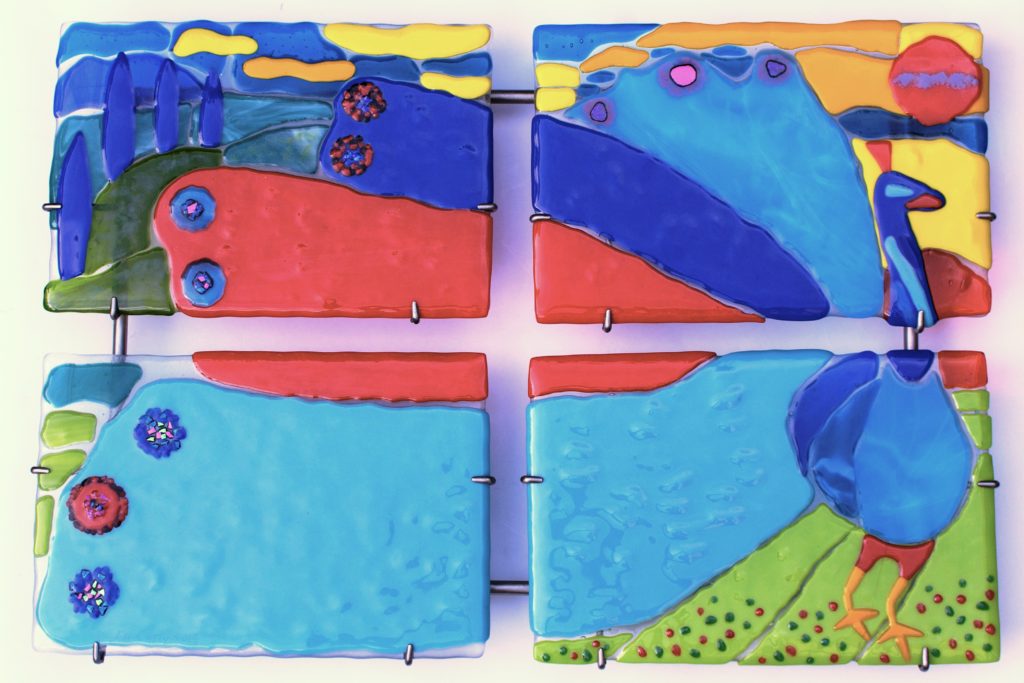
The Healing Power Of Color
The colors and flowing forms in the abstract expressions of natural settings, in the magnificent paintings of Helen Frankenthaler, evoke just this kind of awakening to the delights of the beauty of form itself, and, at the same time, of the harmonies of the natural world and our continuing possibility of harmony with it.
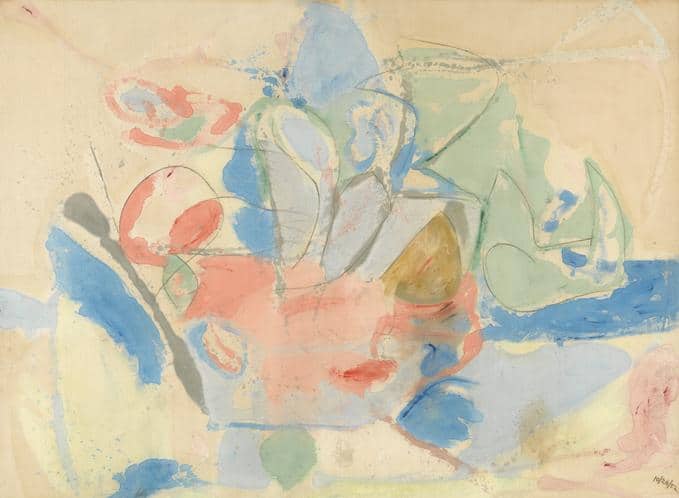
Her colors are subtle, blended, evanescent. All the many tones and shadings, personalities, of color are at the core of the transforming interaction we have with a work of art. I am a true believer in the power and joys of color, for the artist and the viewer. Henri Matisse has a great comment about this. He wants to discover
“…how to make my colors sing.”
For everyone knows, he wrote, that
“good color sings. It is melodious, aroma-like, never over-baked… can inspire ideas of joy, of riches, of glory and love.”
Allowing Art To Speak To You
While there is this enlargement of feeling, this freeing of spirit that art can evoke, there are also some more mundane, yet important, results in responding to a work of art. The discoveries that you can see in the work, the discoveries that you can make about the work—these promote new possibilities, flexibility not only in the way of seeing things, but in the way of doing things.
I think that interactions with art can remind us, for example, that the impact of our losses of activities imposed by this current regimen can be a positive impetus. To taking a fruitful detour in something you have been deprived of doing, finding an equal if not improved way of doing it. Think about it and try it. I’ll go first.
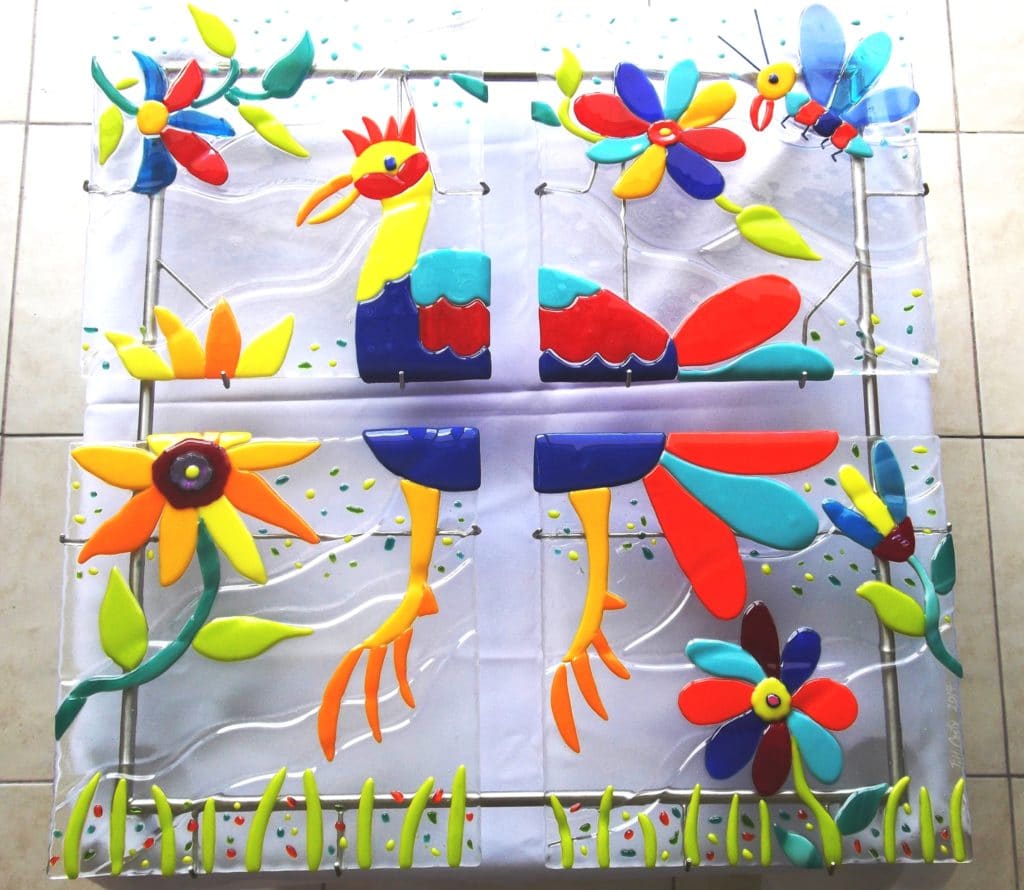
In this stage of my career, I have been creating ensembles combining colorful glass pieces with a variety of metals that frame them, parallel the feel and flow, the motif of the images on the glass. While here in the Monterey Bay area, I work with a wonderful metal artisan, Fred Saunders. I first complete my glass pieces. Then I make an initial design for the ensemble and we consult, adjust, amend. Fred makes initial versions, we consult—until all is refined and assembled.
In these days, we couldn’t meet, and the face-to-face was crucial. And so, deprived, it occurred to me to try something I’d thought of on and off for some time. I’ve created a new series of works that stand alone. Glass “Solos.” I first fire the glass pattern I’ve designed in my usual basic flat form. Then I fire the piece again to “Slump” the glass over molds that create one or two curves, allowing the piece to stand alone. I love them. Might never have got to it if….
Seeing Silver Linings
I’m reminded as well of an earlier deprivation, and later creating something out of what had happened. My husband and I were in the midst of an extended stay in La Paz, Baja California, and I didn’t have my kiln to fire my glass. I’ve never been much of a painter, but I tried it and it was fun. Even though far from perfect.
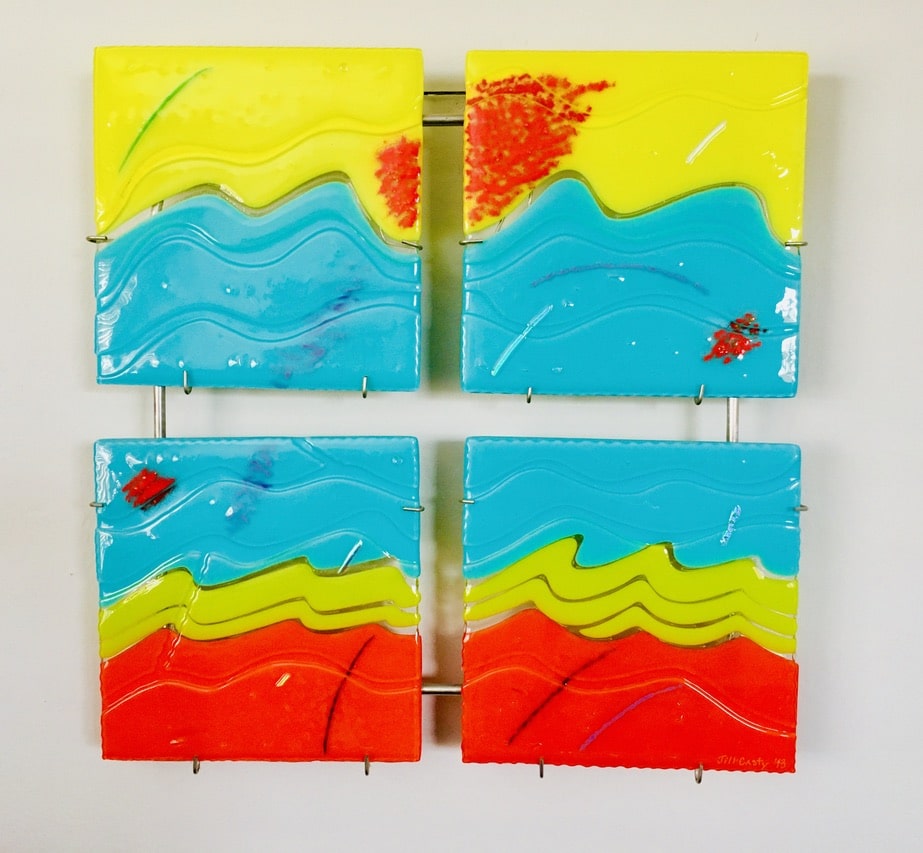
I wasn’t suddenly a Painter, but I did like one of the paintings a lot. The next year, there with my kiln, I used the painting as the basis for one of my favorite glass sculptures, “Sunlight on the Baja Shore.”
So, What About You And Art?
True, nothing can match being with the physical, tactile work of art. But in this period where you’re blocked from museums and galleries, there are endless opportunities to probably see more works, artists, museums, galleries, more variety, than you would have encountered or thought of seeing when you were free to roam.
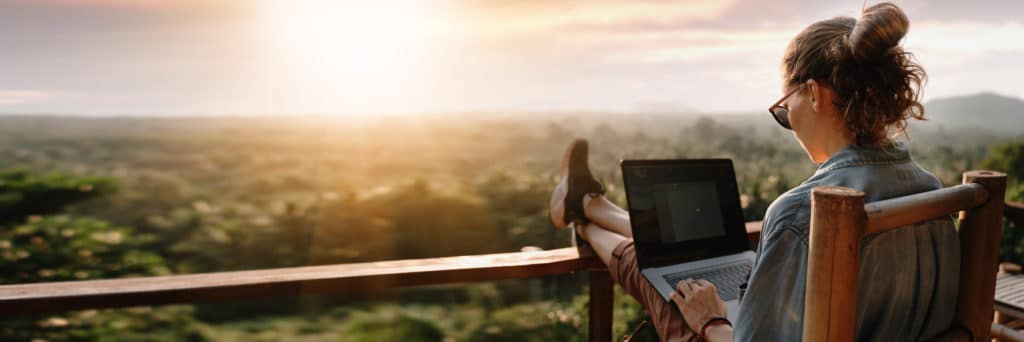
In the virtual art world, you can more readily explore, giving something new a try, tracing a career, a style, a movement, a period of art. Besides discovering and using thematic programs that are available, you can build your own seminar, testing programs you encounter, hop-scotching from one program to the options supplied with it by algorhythms.
This of course applies to the fun and widening of horizons for the other arts as well. Others that also feed the soul, raise the spirits. I’m a fan of You Tube and its endless offerings, including items you can uncover through Search. There are more full-length ballets, let alone excerpts, more variety of styles and choreography than you could watch in a year.
Exploring Art In A Virtual World
My appreciation of ballet, and a sense of the exhilarating power of individual creativity, whatever the art, was ignited recently by a comparison of concepts and styles in Matthew Bourne’s iconoclastic re-imagining of “Swan Lake” and the traditional performance by the Kirov Ballet. The Bourne is not new, but I would not have encountered it, or experienced that revelation of what art can do, if I had not been forced to stay at home and watch TV.
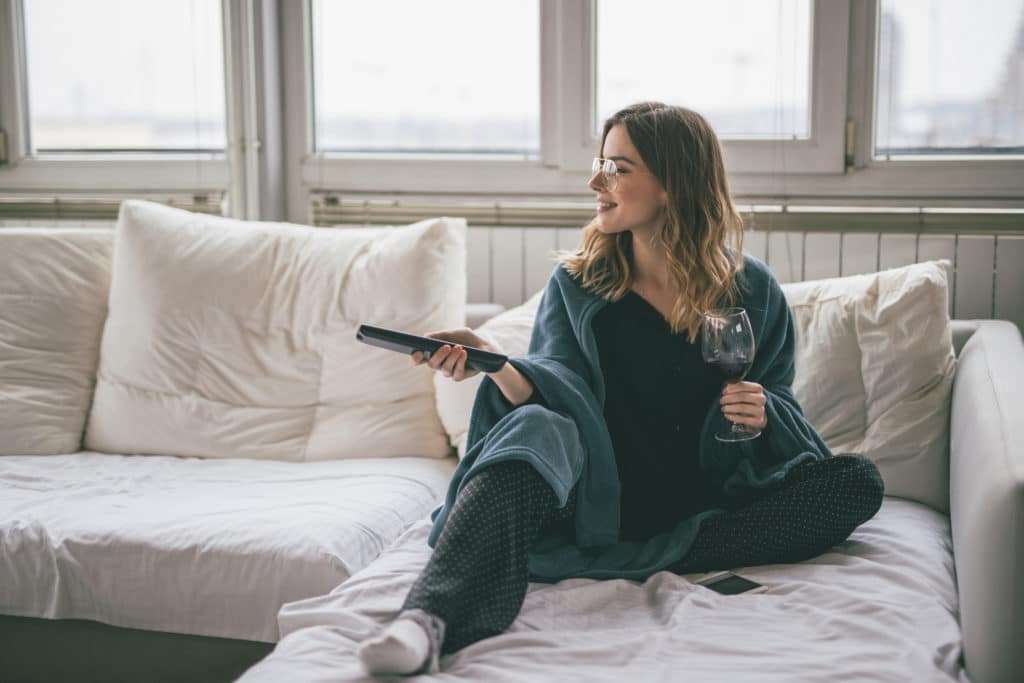
Another possibility is the delight and stimulation, growth of appreciation, of immersing yourself in the work of one artist or the art itself, thanks to our companion, TV. In a week or so, I watched two of four musical dramas by Stephen Sondheim, three two-hour tributes to him, three wonderful musical treats by BBC Proms, which I had never thought of before, and a documentary of Miles Davis and his music. The pleasures of deprivation.
Of course, I haven’t been able to go to a movie theater, and much is lost when you’re limited to the size (grand as yours may be) of a television screen. But there are opportunities to explore and be refreshed, enlarged, moved to the pleasures of tears or laughter, to go beyond your usual inclinations and boundaries. Explore, take advantage of what’s there. From the trail-blazing innocence (but also daring) of creating a new genre in thirties musicals to the new perceptions and styles of a contemporary film-maker like Ava DuVernay. Busby Berkeley’s (Who’s he?) dance extravaganzas (beyond good taste) are available in excerpts as well as in the musicals.
Watching Vs Doing
Some years back, when I was doing graphic design, not yet art (well, a kind of art), my husband and I were living in Spain. He was busy working on a book and I created the kind of creative seminar you can build!
And that is—I read some books. Remember?
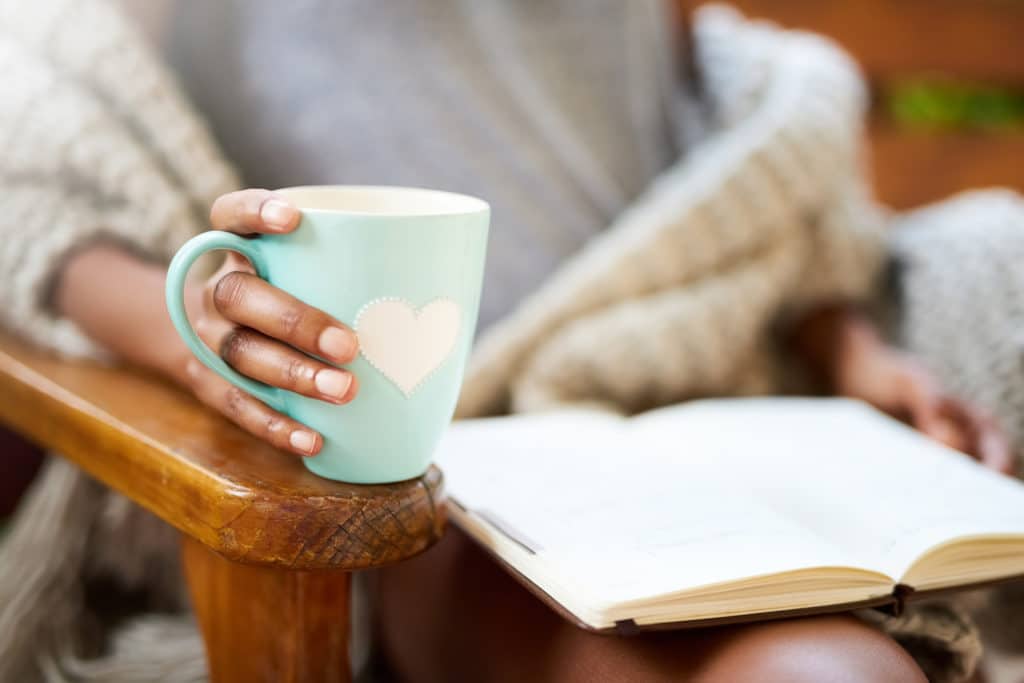
It was engrossing and mind-opening. Its own kind of joy. I read authors I had meant to read, but never got around to. I read authors I had never thought I wanted to read. And as you can do with the visual arts, I made sequences, connections. I read an author’s work in sequence, I read authors of a Period or style. The patterns of meanings that developed, the discoveries, had their own kind of beauty in the mind.
And I also did a kind of art that is a starting point, and yet a fulfilling point in itself. I traced.
Using sheets of acetate, I traced every detail of many wonderful old buildings and streets, churches, bridges that we had taken photos of. I then placed the sheet in a printer and copied it.
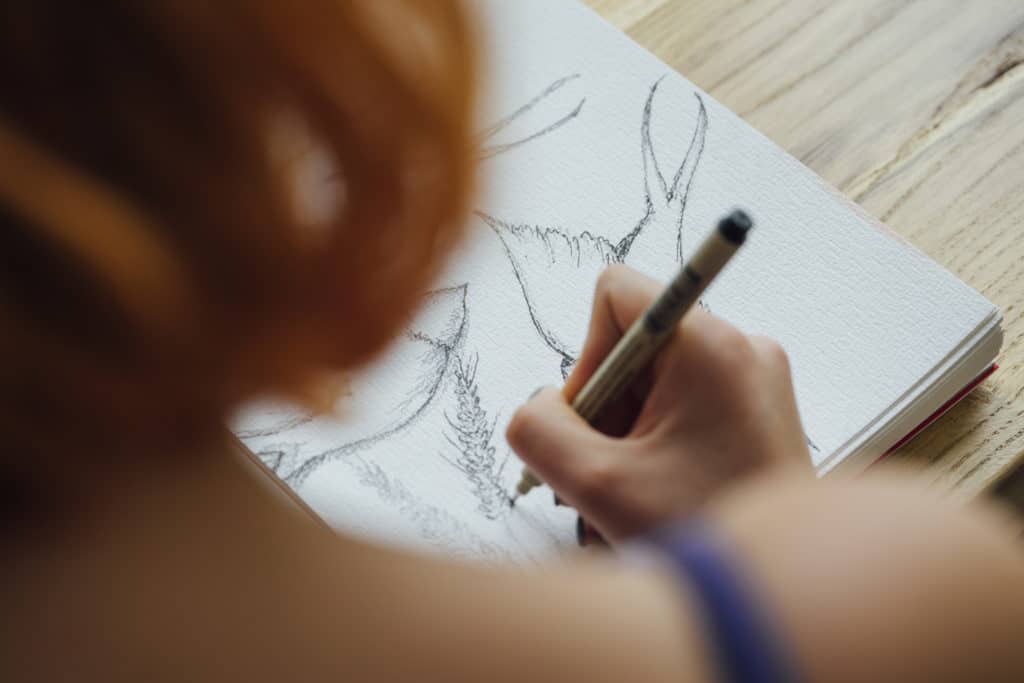
I remember that the results were so pleasing (with their own kind of joy of creation of one little touch of beauty), I then used the “drawings” I had created to make sets of note cards.
Another basic, yet art-feeling activity, is to cut shapes out of colored paper and then paste them on sturdy paper to match an illustration of an existing work. Or better yet, cutting and pasting to create your own modernist abstraction. Like Matisse’s Cut-Outs late in his career.
“It’s Wonderful That Art ‘Aint Easy”
An innovative practice in the art world today is making art with found objects. It’s easy and fun to concentrate on discovering and selecting a spectrum of objects, organizing them into a rhythmic artistic pattern, gluing them to a sturdy backing. Or, trickier but possibly more of an achievement is to find appropriate objects and build your own small sculpture. It takes time and patience, and creativity, but it gives you the pleasures of art.
There is a Stephen Sondhem song from his Sunday in the Park with George, in which the painter Georges Seurat sings “Art isn’t Easy, ”how piece by piece, bit by bit, touch by touch, you have to work at putting it together. But that you have to do all this so carefully, so involving is part of it. What he’s really singing is that it’s wonderful that art isn’t easy. It’s so much more fulfilling than being easy—and not a bad hint for living.
Doing or viewing, art takes you out of yourself and into its new harmony of sharing creating in the world. Opening into a new dimension of self and spirit, of mind and emotion. Liberating imagination. Doing or viewing (or hearing), it takes you into the joy of all kinds of Beauty. Still possible in the world despite all that assaults our spirit.
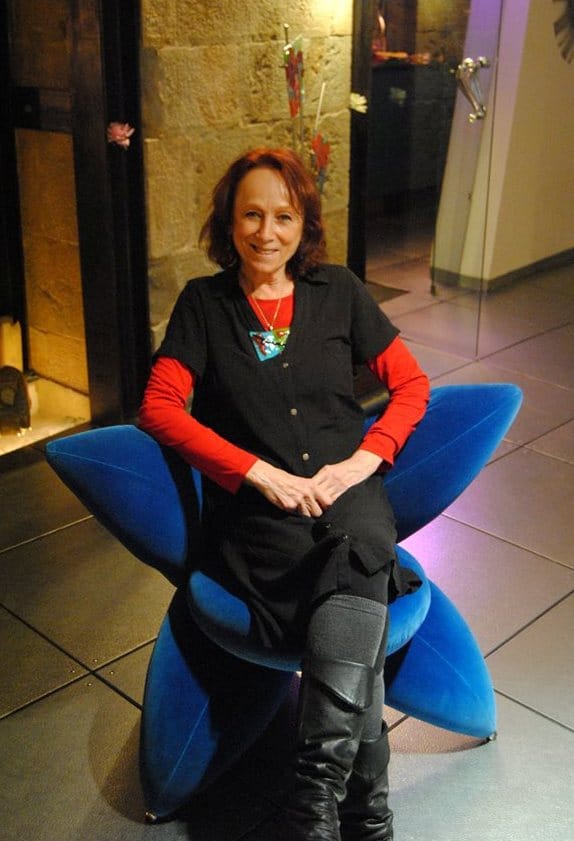
Jill Casty
Glass Artist
In recent years, working mainly in Italy, Mexico, and California, Jill Casty focused on unique sculptures with ensembles of brilliant, colorful fused glass and various metals. Earlier, in the United States, her career centered on the creation of large-scale works for public places, both civic and commercial. Working again in California, she now explores new ventures in both the public and personal art worlds.

